The 140mm Slim Tower CPU Cooler Roundup: Thin & Light Done Just Right
by E. Fylladitakis on May 24, 2017 8:00 AM EST- Posted in
- Cases/Cooling/PSUs
- be quiet!
- Noctua
- Phanteks
- Cooler
- Thermalright
Be Quiet! Shadow Rock Slim
Be Quiet supplies their tower cooler in a black, sturdy cardboard box, with minimal artwork but plenty of information about the cooler printed on all sides of the box. The company straightforwardly advertises that this cooler is capable of handling CPUs with thermal design power (TDP) up to 160 Watts, but this figure alone does not tell much about the overall performance of a cooler.
Inside the box we found a frugal bundle, consisting of a one-fits-all backplate, mounting hardware, a syringe with thermal compound, and a leaflet with very basic installation instructions.
The Shadow Rock Slim initially appears to be a very simple tower cooler that has been designed for 140 mm cooling fans. A closer inspection however reveals a very complex fin cutout that has been developed so as to minimize aerodynamic drag and, in extend, the noise that is being created by the moving airflow. A thicker, decorative metallic plate with the company logo etched on it can be seen at the top of the fin array. Rounded metallic caps cover the heatpipe end points.
Despite its “slim” identification, the Shadow Rock Slim is not really a slim CPU cooler. It certainly is much smaller than the monstrous Dark Rock Pro 3 that we reviewed a couple of years back, but still the body of the cooler alone is 52 mm wide. It comes with one of the company’s better fans, a special 135 mm variation of their “SilentWings” series. These fans feature a rifle bearing engine, which greatly improves the lifetime of the fan relative to the typical sleeve bearings, all the while retaining similar low-noise operation characteristics.
The Shadow Rock Slim is designed with only four heatpipes and a slightly smaller base than that of the other coolers in this review. Its design is sound, with the two middle heatpipes that will be facing the bulk of the thermal energy flow expanding into the edges of the fin array, where the airflow is going to be greater. This is the only cooler of this review that does not have nickel-plated heatpipes, so we can expect that their vibrant polish will soon disappear due to oxidation. (Oxidation doesn't cause any real damage, but it does eventually affect the cooler’s aesthetics)
The lower half of the cooler’s base is also made out of copper but, unlike the heatpipes, it is nickel plated. It has also been polished down to an immaculate mirror finish. The top half of the base is solid aluminum and does look like a small heatsink, yet its contribution to the overall performance of the cooler will be negligible, it is only meant to provide mechanical cohesion and support for the mounting hardware.


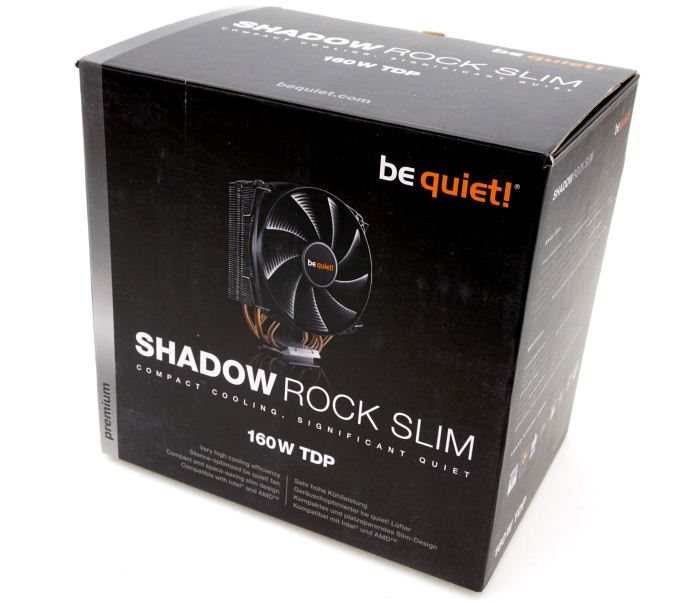
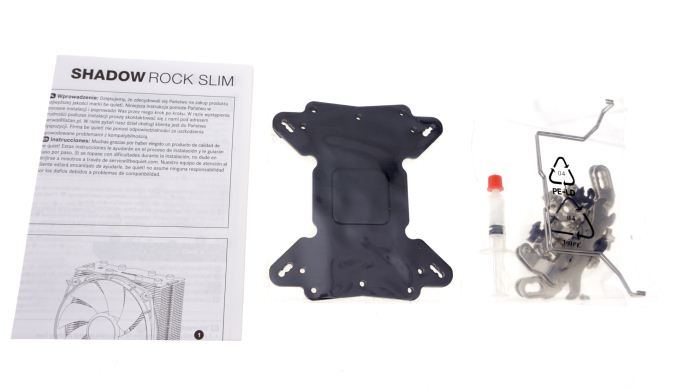

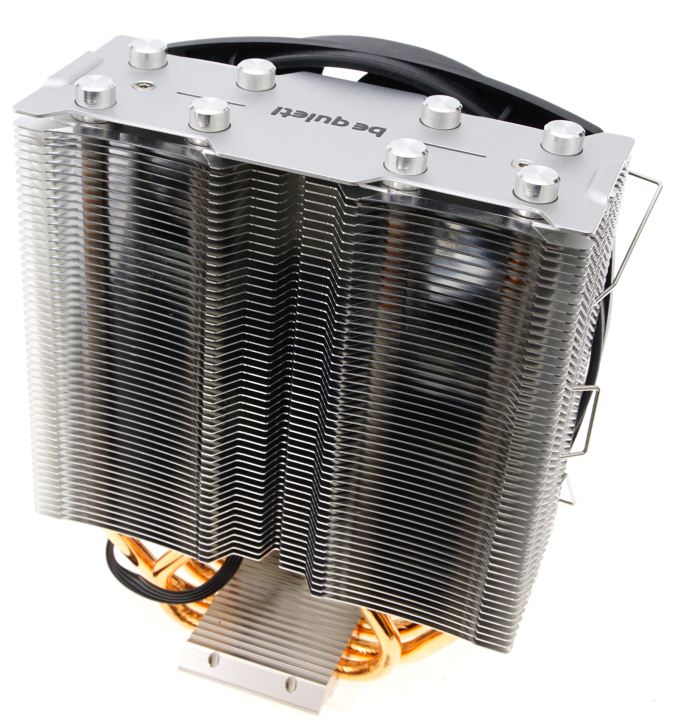
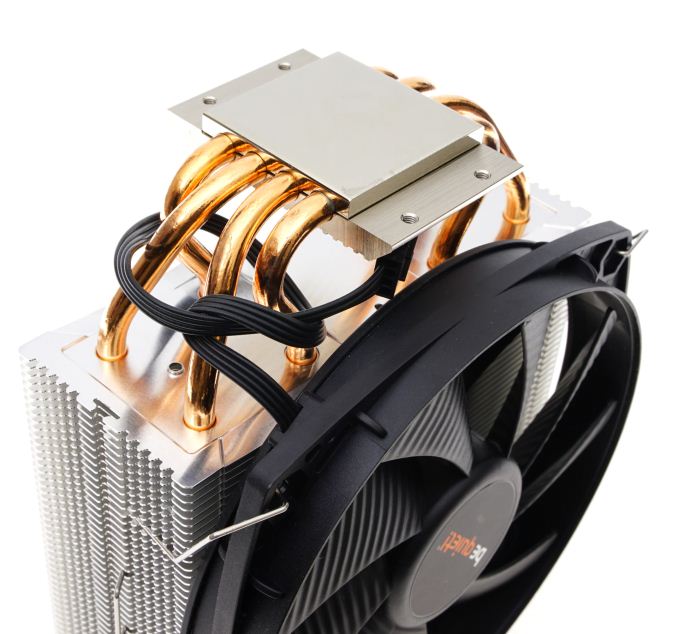
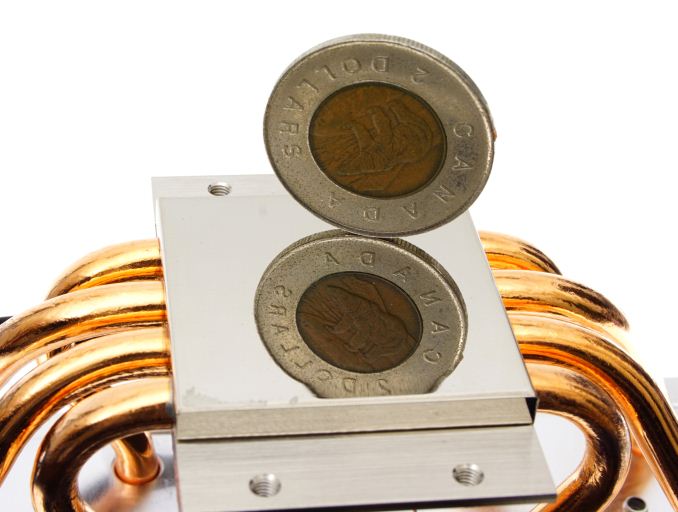








74 Comments
View All Comments
Samus - Wednesday, May 24, 2017 - link
I think the thermalright cooler is pretty hard to ignore unless you are running a high-wattage CPU. Mild overclocks of a typical 80w CPU will make the thermalright the ideal solution at ~100w load, and also the quietest.Communism - Wednesday, May 24, 2017 - link
The problem with E. Fylladitakis 's style of testing is that they miss major factors in how the things tested actually function in relation to what they are made for.The reason why Noctua always does "better" in these synthetic tests is that they generally have a 100% flat contact surface.
The problem with 100% flat contact surfaces is that CPU IHS aren't anywhere close to 100% flat surfaces.
Most CPU IHS are concave, which is why Thermalright HSF always have convex contact surfaces.
Clamping pressure is also highly important, especially for Intel's non-soldered IHS CPUs.
Higher Clamping pressure both reduces the distance between the silicon and the IHS as well as forms a better mating between the IHS and the convex Thermalright contact surfaces.
These, and many other major factors that crop up in the real world make the 100% artificial testing like E. Fylladitakis conducts in actually have an extremely large margin of error, making them far less useful than the testing "scienciness" would lead you to believe.
fanofanand - Thursday, May 25, 2017 - link
If what you are suggesting is true, we should see Thermalright outperforming Noctua in every other publication's testing, correct? Most review sites (I believe all other sites actually) test CPU cooler performance on an actual CPU running tests, and more often than not inside of an actual computer case. Yet those same tests bring very similar results to what Anandtech has shown, which would appear to invalidate your entire postulation. How do you explain the lack of disparity between these other journalists' "real world" cases, and what Anandtech has done?Communism - Thursday, May 25, 2017 - link
Keep up your rhetorical questions.I don't know why I bother posting on this shill infested site anyways, waste of my time.
I'm not going to spoon-feed you for 20 posts like the forums.
I've spoonfed you for literally 100 posts before on the forums and your shill self has never acknowledged anything, making this a pointless conversation by any metric.
Have fun shilling with the other shills, adequate journalism in technology died quite a long time ago, and it shows.
Zetbo - Friday, May 26, 2017 - link
What a loser you are. When the data does not backup your point of view...you call everyone a shill! Thats the way to go! :DCommunism - Friday, May 26, 2017 - link
Took you a whole day to make another account?You really should get your pay docked.
Keep going and you're getting doxed.
fanofanand - Friday, May 26, 2017 - link
Doxx me big boy :)fanofanand - Friday, May 26, 2017 - link
Uh, I'm not on the forums, have you been taking mushrooms? I did read that they are the "least dangerous" psychadelics, but you seem to have overindulged. Apparently my point was irrefutable as you chose not to refute anything I wrote.BrokenCrayons - Friday, May 26, 2017 - link
The testing methods used in these HSF reviews are perfectly adequate because they remove a number of uncontrollable variables that would result from testing with PC hardware. The simulator equipment can produce repetable results with little to no variance between tests within AT's limited budget. I much prefer artifical tests as the basis for relative comparisons since the tests performed by other review sites won't accurately emulate my specific computing environment anyway and are therefore only useful as similarly relative comparisons. The science of these results appear trustworthy.WinterCharm - Thursday, May 25, 2017 - link
Funny how Thermalright performed better than Noctua at low and high fan speeds, then!